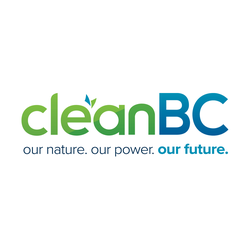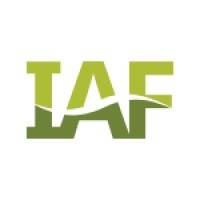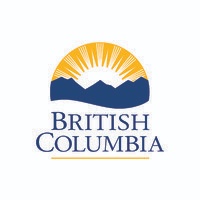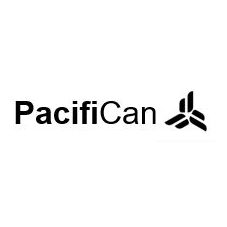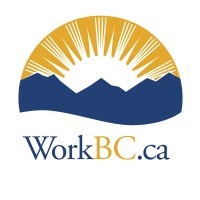Navigating the landscape of British Columbia non-profit funding can feel daunting, especially given the variety of grant programs available. BC non-profit grants come from all levels of government as well as foundations and other agencies, each with its own focus and criteria. Fortunately, there are many opportunities tailored to different sectors and community needs. In this guide, we explore key grant programs for non-profits in BC – from large provincial funding streams to smaller community-based grants. Whether your organization is in Vancouver, Victoria, or a small town, understanding these opportunities can help you secure funding and advance your mission.
Below, we break down some of the most important grants for non-profits in BC. This includes provincial government programs (like the popular Community Gaming Grants and Multiculturalism Grants), cultural and sports funding bodies, as well as community foundation grants and city-specific opportunities in Vancouver and Victoria. By learning about these programs, your non-profit can identify which funding aligns with your goals and how to apply. Let’s dive into the major BC non-profit grants that support charitable work across the province.
Community Gaming Grants BC: Provincial Funding for Community Programs
One of the largest funding programs for non-profits in British Columbia is the Community Gaming Grants program. This provincial grant program distributes approximately $140 million annually to thousands of non-profit organizations. The funds come from BC’s commercial gambling revenue, which the government reinvests into community programs and services. Community Gaming Grants support a wide range of activities that directly benefit communities throughout BC – from youth sports leagues and arts festivals to environmental conservation projects and social services.
Key features of Community Gaming Grants:
Six Funding Sectors: Grants are awarded in six sectors of community programming: Arts & Culture, Sport, Environment, Public Safety, Human and Social Services, and Parent Advisory Councils (education-related grants for parent committees). Each sector has its own application window during the year, so non-profits apply at the time corresponding to their sector. For example, Arts & Culture applications might be in the spring, whereas Human and Social Services grants are later in the year. This sector-based approach ensures funding is distributed across different community needs.
Eligibility: To qualify, an organization must be a registered non-profit delivering ongoing programs that benefit the broader community. There are specific rules – for instance, the organization should have an open membership and a volunteer board of directors. Importantly, Community Gaming Grants fund established programs (the program should be operating at the time of application), rather than brand-new initiatives or start-ups. This means if you’re looking for seed money to launch a new idea, this grant wouldn’t be the right fit; it’s intended to sustain or expand existing services that have proven community benefit.
Grant Amounts: The grant amounts can be significant. A single organization can receive up to $125,000 per year for local-level programs, and up to $250,000 per year for programs that have a regional or provincial scope. The exact amount awarded depends on factors like the size and scope of the program and the demonstrated community impact. Keep in mind that these grants are competitive – funding is not guaranteed year to year. The program’s total budget and number of applicants will influence how much each successful applicant receives. Many smaller community organizations might get tens of thousands of dollars, while larger provincial non-profits could receive the upper limit if their programs serve a broad population.
Application Process: Applications are done online through the province’s system. Each year, an organization can submit one application for program funding (even if you run multiple programs, they are combined into one application). It’s crucial to pick the sector that best aligns with your mission or programming when applying. The application requires details about your organization’s finances, governance, and the outcomes of the programs for which you seek funding. There are also Capital Project Grants available as a separate stream under Community Gaming Grants – these are for infrastructure projects (like building renovations, equipment purchases, or facility upgrades) and have their own guidelines and application timing.
Community Gaming Grants BC have a broad impact. For example, a community arts council might use the grant to host an annual public art festival, a search and rescue society could fund training and equipment under the Public Safety sector, or a local food bank might support its food distribution program under Human and Social Services. Because the program is funded by gambling revenue earmarked for communities, it remains a staple funding source that many BC non-profits count on. Organizations that receive a Community Gaming Grant must meet reporting requirements to show the money was used as intended, and they are subject to audit – transparency and accountability are built into the process. Overall, this program is a lifeline for about 5,000 non-profits each year, making it a top grant to consider if your organization delivers ongoing community programs in British Columbia.
Multiculturalism Grants BC: Supporting Diversity and Anti-Racism
British Columbia prides itself on diversity and is actively working to promote multicultural understanding and eliminate racism. The Multiculturalism and Anti-Racism Grants program (often just called Multiculturalism Grants) is a provincial initiative designed to support these goals. This grant provides small project funding (typically up to $5,000) to non-profit organizations for community-based projects that celebrate multiculturalism, foster intercultural dialogue, and combat racism or hate in local communities.
Key points about the Multiculturalism Grants in BC:
Purpose: These grants are aimed at projects that bring people together from different backgrounds, improve intercultural trust, and reduce barriers for marginalized ethnic or racial groups. For instance, a non-profit might organize anti-racism workshops in schools, a multicultural festival, a community dialogue series on reconciliation, or arts performances that share and celebrate a specific cultural heritage. The idea is to encourage inclusivity and educate the public to appreciate BC’s multicultural identity, while addressing issues of racism or discrimination.
Eligibility: Generally, registered non-profit societies, Indigenous communities, or other not-for-profit community organizations in BC can apply. The project should have a clear multicultural or anti-racism focus. Often, partnerships or collaboration with cultural groups, schools, or local governments are encouraged to broaden the impact. Given the small grant size, these funds are usually best for short-term projects, events, or the development of educational resources and community engagements.
Funding Details: Each organization can typically request a grant up to a maximum amount (commonly $5,000 per project in recent years). While $5,000 is not a huge sum, it can go a long way for community events or pilot projects. Because the grant amounts are relatively small, the application process is not overly complicated – but you do need to outline how the project will address multiculturalism or anti-racism, and provide a budget for how the funds will be used. Many groups use this funding as seed money and often leverage it to attract additional local support (in-kind contributions or donations) to make their event or project bigger.
Timeline: The Multiculturalism Grants are usually offered on an annual cycle. The call for applications might be announced by the provincial government (often through the Ministry responsible for multiculturalism or anti-racism). Applicants typically submit proposals in the fall or winter for projects taking place the following year, but the timing can vary. It’s a good idea to keep an eye on the BC government news releases or the relevant ministry’s website for announcements about the grant intake period each year. Successful applicants are announced publicly – for example, a news release might list organizations and a brief description of their funded projects, which can be helpful to see the kinds of initiatives that get approved.
For non-profits engaged in diversity and inclusion work, the Multiculturalism Grants program is a wonderful opportunity to obtain funding for grassroots initiatives. Even if the dollar amount is modest, these grants carry symbolic weight – they signal government support for the values of diversity, and they can help launch projects that later grow into larger programs or annual traditions. By securing a multiculturalism grant, your organization can demonstrate to your community (and other funders) that your project has been vetted and endorsed as contributing to a more inclusive British Columbia. Plus, projects funded by these grants help make BC a more welcoming place for everyone by celebrating cultural differences and bringing people together in positive ways.
BC Arts Council Grants: Funding Arts and Culture
Arts and culture are essential to vibrant communities, and the BC Arts Council (BCAC) is the leading public funder of arts in the province. The BC Arts Council grants provide crucial funding to non-profit arts organizations, cultural groups, and even individual artists across British Columbia. If your non-profit operates in the arts sector – whether you run a theatre company, an art gallery, a music festival, a museum, or a community arts workshop – chances are you will look to BC Arts Council programs for support.
Here’s an overview of BC Arts Council grants and how they benefit non-profits:
Who and What is Funded: The BC Arts Council offers a wide array of grant programs. Non-profit organizations can apply for operating grants (sustained funding for established arts organizations), project grants (one-time funding for specific projects or events), and discipline-specific grants (for areas like dance, theatre, visual arts, literature, music, media arts, and more). There are also initiatives for community arts development, which often help smaller communities and emerging groups engage in arts programming. Additionally, the Council supports Indigenous arts and culture through dedicated programs, aligning with the broader goal of reconciliation and recognizing the importance of First Nations, Métis, and Inuit cultural expressions. In short, if your work has an artistic or cultural focus, there’s likely a BC Arts Council grant that fits.
Funding Scale: The BC Arts Council distributes tens of millions of dollars in grants each year. In recent years, the total annual funding has been in the range of $35–40 million or more, reaching hundreds of organizations and individuals. For non-profit organizations, operating grants can range widely based on the size and scope of the organization – a large institution like a major regional theatre or museum might receive a substantial six-figure operating grant, while a small local arts group might get a smaller amount to support their yearly programming. Project grants similarly can vary, often ranging from a few thousand dollars to tens of thousands for a significant project. This funding can cover costs like artist fees, production expenses, venue rentals, and outreach activities, ensuring that arts organizations can deliver performances, exhibitions, or workshops to the public.
Application and Criteria: BC Arts Council grants are competitive and adjudicated by peer review committees (panels of artists and arts professionals) who assess each application’s artistic merit, community impact, and feasibility. When applying, a non-profit needs to clearly articulate its artistic vision, the significance of the project or programming, and how it engages the community or contributes to the art form’s development. Financial need and stability of the organization are also considered. There are often specific deadlines per program (some grants have annual deadlines; others might have multiple intakes a year). Organizations should plan ahead to meet application deadlines and ensure all required materials (proposals, budgets, support letters, samples of past work, etc.) are prepared. Over the past couple of years, BCAC has also introduced initiatives to prioritize equity, accessibility, and inclusion – for example, they’ve had capacity-building grants for underserved artists or additional funding (like the Access Support fund) to help artists with disabilities participate. Non-profits should look at BC Arts Council’s strategic priorities, as aligning with those (such as engaging diverse communities or supporting emerging artists) can strengthen an application.
In summary, BC Arts Council grants are a lifeblood for the arts community in BC. They enable non-profits to create and present work that might not survive on ticket sales or memberships alone, especially in smaller markets or experimental genres. For a non-profit arts organization, receiving a BC Arts Council grant not only provides financial backing but also prestige – it’s an endorsement from the province’s primary arts funding body. This can open doors to other funding (for instance, private donors or sponsors often take note if an organization has provincial arts council support). If your non-profit’s mission involves arts or cultural heritage, tapping into BC Arts Council funding programs should definitely be on your radar to help sustain and grow your activities.
First Peoples’ Cultural Council Grants: Preserving Indigenous Heritage
British Columbia is home to a rich tapestry of Indigenous cultures and languages. Supporting the revitalization of Indigenous heritage is the focus of the First Peoples’ Cultural Council (FPCC), a provincial Crown corporation that administers grants and programs for Indigenous (First Nations, Métis, and Inuit) cultural preservation. First Peoples Cultural Council grants empower Indigenous communities and organizations to safeguard and rejuvenate their languages, arts, and cultural practices. For non-profits and community groups that are Indigenous-led or serve Indigenous peoples, FPCC grants are a key resource for cultural projects.
Key aspects of the First Peoples’ Cultural Council grants:
Areas of Support: FPCC provides funding in several program areas. One major area is Language Revitalization – for example, grants for Language Nest programs (immersive early childhood language learning), the Mentor-Apprentice Program (where an elder speaker mentors a language learner intensively), or community language classes and camps. Another area is Arts – FPCC’s Indigenous Arts Program offers grants to Indigenous artists and collectives for traditional or contemporary art forms, including visual arts, performing arts, music, carving, weaving, media arts, and more. There are also Cultural Heritage grants that support projects like documenting oral histories, protecting important cultural sites, or sharing traditional knowledge practices. Recently, FPCC has introduced programs for things like digitization of cultural materials and even arts infrastructure (e.g., grants to develop studio spaces or cultural centres). Essentially, if the project involves Indigenous language or cultural heritage in BC, FPCC likely has a funding stream for it.
Who Can Apply: These grants are typically available to Indigenous-run organizations, First Nations band or tribal councils, Indigenous schools or cultural societies, and sometimes individual Indigenous knowledge-keepers or artists (in the case of certain arts grants). Even if your group is not formally registered as a non-profit, if it’s a community group endorsed by an Indigenous community, it might be eligible – the criteria vary by program. Non-Indigenous organizations generally would not apply directly unless they are working in partnership with an Indigenous community on a project that the community supports. The goal is to ensure Indigenous peoples are the leaders and primary beneficiaries of the funding. For example, a First Nation’s council might apply for a language grant to run immersion classes in their community, or a Métis association might seek funding for a Métis jigging and music workshop series for youth.
Impact and Importance: The scale of FPCC grants can range from small (a few thousand dollars for an individual artist or a short-term project) up to substantial (tens of thousands for community-wide language programs, and sometimes larger multi-year initiatives for languages). While the grants themselves are crucial, FPCC often provides more than just money – they offer resources, training, and mentorship as part of their programs. For example, grant recipients might get access to conferences or tools on how to create language archives, or artists might attend masterclasses. The work funded by FPCC grants is incredibly important: many Indigenous languages in BC are endangered, and these grants fund everything from recording elders speaking, to developing new curriculum so children can learn their mother tongue, to public arts projects that celebrate Indigenous identity.
For non-profit organizations engaged in Indigenous cultural work, obtaining a First Peoples’ Cultural Council grant is a significant achievement. It means that elders and community leaders have a chance to pass on knowledge that might otherwise be lost. It strengthens cultural pride and community bonds. And from a practical standpoint, having FPCC support can help an organization show other funders that a project is community-approved and aligns with reconciliation efforts. In recent years, there’s been growing awareness and support for Indigenous-led initiatives in Canada; FPCC grants in BC are at the forefront of turning that support into real action at the community level. If your non-profit’s mandate involves Indigenous language, arts, or heritage in BC, exploring FPCC’s funding programs is a must – these grants can be the catalyst that brings a cultural project to life.
viaSport Grants BC: Sport Funding for Communities
Sports and recreation play an important role in community health and youth development. In British Columbia, viaSport BC is the key agency that coordinates sport funding on behalf of the provincial government (and in partnership with other funders). viaSport grants in BC provide financial assistance to sports organizations, athletes, and coaches, with a mission to make sport more accessible and inclusive for everyone. For non-profit sports clubs, regional sports associations, or even organizations that incorporate sport into their community programs, viaSport’s funding opportunities are invaluable.
Here’s what you need to know about viaSport grants in BC:
What is viaSport? viaSport is a non-profit society that was created by the BC government to act as an umbrella for sport development. Essentially, the province channels a lot of its sport-related grant money through viaSport, which then distributes it to the sport community. viaSport also receives contributions from the federal government and corporate partners for certain programs. The focus is on amateur sport – building capacity in local clubs, supporting athletes and coaches, and increasing participation in physical activity across all regions of BC. Since its inception (around 2011), viaSport has administered millions of dollars in grants each year to the sport sector. In fact, since 2013 they have distributed over $36 million to organizations and individuals.
Grant Programs: There are multiple grant programs under viaSport’s umbrella. Some notable ones include:
Community Sport Grants: These are often aimed at local or regional sport organizations to run programs that increase participation. For example, a grant might help a community start a new youth sports league or expand a sport program for girls and women, or for people with disabilities.
Travel Grants (BC Ferries Sport Experience Program): Travel costs in a large province like BC can be a barrier for athletes and teams. Through a partnership with BC Ferries, viaSport offers travel subsidies so that island or coastal teams can afford to travel to competitions on the mainland (and vice versa) without the ferry costs being prohibitive. Similarly, there have been programs to help with travel in northern or interior regions to attend provincial tournaments.
Hosting Grants (Hosting BC): These grants provide funding to organizations hosting major sporting events in BC – such as provincial championships, national or international competitions. Hosting events can be expensive (venues, officials, marketing, etc.), but they bring tourism and community pride. Hosting BC grants (with an annual budget of around $500,000) help cover those costs and encourage more events to come to BC communities. Depending on the level of event, grants might range from around $5,000 for a smaller event up to $15,000 or more for large ones (sometimes even higher for events with big economic impact).
Coach and Officials Development: viaSport also recognizes that behind every athlete are trained coaches and officials. There are grants or subsidies that help coaches get certification or attend courses (coach education grants), and programs to support training of referees and other sport leaders. By investing in people, these grants improve the quality and safety of sport programming.
Inclusion and Diversity Initiatives: A relatively newer focus has been on making sport more inclusive. viaSport has managed funds like the Indigenous Youth Sport Legacy Fund, which supports Indigenous youth participation in sports, or grants aimed at getting more girls involved in traditionally male-dominated sports, or adaptive sports equipment for athletes with disabilities. These targeted grants ensure underrepresented groups have more opportunities in sport.
Access and Impact: viaSport grants are accessed by applying through their website or an online portal (often viaSport uses an online application system for intakes). Eligibility criteria vary – some grants are for provincially recognized sport organizations (like Provincial Sport Organizations governing a specific sport), while others are open to local clubs or community organizations partnering with sport groups. A key requirement is usually that the applicant is a non-profit or charitable organization involved in sport or physical activity. The impact of viaSport’s funding is widespread: Over 1,000 sport organizations in 90+ communities have benefited. This might translate to a new community basketball program in a small town thanks to a grant, a youth soccer team from a remote area able to travel to provincials, or a provincial sport body hiring a coordinator to develop coaching resources. For the recipients, a viaSport grant can be the difference that enables kids and adults to play sports who otherwise couldn’t due to financial or geographic barriers.
In conclusion, viaSport grants in BC significantly “level the playing field” by reducing financial obstacles and supporting the behind-the-scenes work that makes community sport possible. Non-profit sport organizations should keep an eye on viaSport’s funding opportunities throughout the year – these grants can help expand your programs, purchase much-needed equipment, train your volunteers, or bring a big event to your community. The ultimate goal is aligned with viaSport’s vision: building a robust, accessible sport system so that everyone in BC has a chance to participate and excel in sports, regardless of their background or location.
Innovator Skills Initiative (BC): Tech Talent Grants for Non-Profits
Not all grants come in the form of program funding – some help non-profits build their internal capacity. The Innovator Skills Initiative in BC is one such program, geared towards strengthening organizations (and companies) by enabling them to hire new talent in technology and innovation roles. In essence, this initiative is a wage subsidy grant that provides up to $10,000 to help an employer hire a student or recent graduate in a tech-related position. Importantly, the program is open to non-profit organizations (as well as for-profit companies and startups) in British Columbia, which means non-profits can take advantage of this funding to bring in skilled workers who can boost their operations.
Key details about the Innovator Skills Initiative (ISI) relevant to non-profits:
Purpose of the Program: The Innovator Skills Initiative is designed to serve two goals at once: help under-represented people get their first job in the tech sector, and help BC organizations – including non-profits – fill a skills gap or innovate by hiring tech talent. Under-represented people in tech often include groups like women, Indigenous peoples, Black and other people of color, 2SLGBTQ+ individuals, persons with disabilities, and newcomers. For a non-profit, this means if you have a project or need that involves technology (for example, developing a new website or app, implementing a database or CRM, doing digital marketing, or analyzing data to improve your services), you can hire an eligible candidate and get a significant portion of their wages covered by the grant.
How it Works: Typically, the program offers up to $10,000 per hire (often calculated as up to $5,000 for each 4-month work term, and some organizations can apply for two terms to have an intern for 8 months or two different interns). The non-profit must pay at least matching funds – for instance, if the student’s wage is $20/hour, the grant might cover about half of that while the organization covers the rest. The exact terms can vary year to year, but the idea is that ISI funding makes it much more affordable to bring on a new worker. Non-profits usually apply through Innovate BC (the Crown agency that manages ISI) by posting a position and finding a candidate, then applying for the grant with details on how the role is tech-related and how it provides a learning opportunity for the student. The roles supported are quite broad as long as there’s a technology or innovation component: it could be a software developer, a digital communications assistant, a research analyst, a UX/UI designer, etc., working within your non-profit.
Benefits to Non-Profits: For many non-profits, hiring extra staff or interns can be a luxury due to budget constraints. The Innovator Skills Initiative non-profit grant essentially gives your organization a funded intern or junior employee, which is a huge win-win. Your organization gains fresh talent and can undertake projects that you might not have had capacity for otherwise (like overhauling your website, creating a social media campaign, or implementing a new IT system). Meanwhile, the person you hire gains valuable work experience and a foot in the door of the tech sector. This is especially impactful if your non-profit doesn’t traditionally focus on technology – having a tech-savvy team member can help introduce new efficiencies or digital strategies to further your mission. Many non-profits have used ISI interns to, say, build a mobile app that connects their clients to services, or to analyze program data to demonstrate impact to funders.
Application Timing: The Innovator Skills Initiative often runs in intakes – for example, aligning with academic terms or summer internship periods. In recent years, there have been multiple intakes per year (e.g., fall, winter, summer). Non-profits in BC should check Innovate BC’s website for the latest information on when applications open. It’s also wise to plan ahead by identifying a potential project and even connecting with local colleges/universities or networks to find a suitable student candidate. There is usually a requirement that the person hired has limited work experience in their field (since it’s meant to be a “first job in tech” opportunity), and they must be either a student or recent grad residing in BC.
In summary, the Innovator Skills Initiative is a fantastic resource for BC non-profits looking to innovate and build capacity without bearing the full cost of a new hire. By leveraging this grant, you can bring in a bright emerging professional to help advance your organization’s technology or research goals. It’s a competitive program (many businesses and non-profits apply), so putting together a clear case for how the role will benefit the student and your organization will be important. If awarded, not only do you get financial support, but you’re also contributing to the growth of the tech sector in an inclusive way – providing opportunities to those who might face barriers entering tech. For non-profits increasingly expected to be tech-savvy (whether in fundraising, service delivery, or communications), the Innovator Skills Initiative can be a game-changer.
ParticipACTION Community Challenge Grant (BC): Promoting Active Communities
When it comes to promoting physical activity and wellness, ParticipACTION is a well-known national non-profit that champions the cause of getting people moving. In British Columbia, community organizations can tap into the ParticipACTION Community Challenge Grant program to encourage active lifestyles. Each year, ParticipACTION runs the Community Challenge – a Canada-wide initiative typically held in June – and as part of it, they offer small grants to support local events and programs that get people active. Non-profits, municipalities, and community groups in BC are eligible to apply for these grants to kickstart physical activity projects in their community.
Key points about the ParticipACTION Community Challenge Grant in BC:
Grant Purpose and Amount: The grants are intended to help plan and deliver initiatives during the ParticipACTION Community Challenge period (usually the month of June). The typical grant size ranges from $500 up to $1,500. While this is a modest amount, it’s often enough to organize community activities such as neighborhood walks, exercise classes in the park, sports tournaments, dance workshops, or family play days – anything that counts towards getting people moving. The focus in recent years has been on reaching equity-deserving groups. This means projects that engage populations who might face higher barriers to physical activity are prioritized. For example, activities geared towards seniors, Indigenous communities, newcomers to Canada, low-income families, people with disabilities, or the 2SLGBTQIA+ community may be looked upon favorably since they help ensure everyone gets included in the fitness fun.
How It Works: ParticipACTION usually announces the grant opportunity early in the year. For instance, the application window might open in January and close by mid-February, giving organizations time to plan for June events. Applicants provide details of their proposed event or program: what it is, who it will engage, how it will promote physical activity, and how they will use the grant funds (e.g., to purchase equipment, hire instructors, promote the event, provide healthy snacks, etc.). If approved, the organization gets the funds and can proceed with planning their Community Challenge activities. During the challenge month (June), participants in each community track their physical activity using the ParticipACTION app or website. The data contributes to a friendly competition among communities nationwide.
Wider Community Competition: An exciting aspect of the ParticipACTION Community Challenge is that it’s not just about individual events – communities are vying to be named “Canada’s Most Active Community.” All the physical activity minutes that locals log go towards the community’s total. At the end of the challenge, ParticipACTION awards a grand prize (around $100,000) to the winning community (and some smaller prizes to provincial winners or runners-up) to support local physical activity initiatives. In 2026, for example, Richmond, BC earned the title of Canada’s Most Active Community and won the $100,000 prize, which can be used to further improve sport and recreation opportunities in that city. For a non-profit involved in the challenge, being part of a winning community can indirectly benefit you by bringing in that larger prize to your area. But even if your community doesn’t win the top prize, the exposure and momentum from the Challenge can lead to new partnerships or continued funding for your activities from other sources.
Impact on Non-Profits and Communities: The ParticipACTION Community Challenge Grant is a catalyst. With a small grant, a community-based non-profit can initiate an event that might become an annual tradition or inspire ongoing fitness programs. For instance, a seniors’ center could use a grant to launch a month-long walking club with pedometers and a celebration event at the end – and that could continue well beyond the challenge. A multicultural society might organize “try-it” sports days for immigrant families to experience Canadian sports, or a First Nations community health team might host traditional games and bring youth and elders together in physical activities. These kinds of events not only improve health and wellness for participants but also strengthen social connections. And because the Challenge is high-profile, you might get local media coverage or support from local officials, raising your non-profit’s profile in the community.
In summary, the ParticipACTION Community Challenge Grant is a wonderful, accessible funding opportunity for BC non-profits that want to promote active living. It’s easy to apply for, fun to implement, and the benefits ripple through the community. By leveraging this grant, you can engage your audience in healthy activities, possibly win larger prizes for your city or town, and be part of a national movement to get Canadians moving. It’s a great example of how even small grants, when combined with community spirit, can lead to big outcomes in public health and community engagement.
Vancouver Foundation Grants (BC): Community Foundation Support
When discussing grants for non-profits in BC, one cannot overlook the role of community foundations – and Vancouver Foundation is by far the largest and most influential of these in British Columbia (in fact, it’s one of the largest community foundations in Canada). Vancouver Foundation grants provide funding to a vast array of charitable projects and organizations across BC, focusing on building healthy, vibrant, and equitable communities. While based in Vancouver, this foundation’s reach is province-wide, and many non-profits tap into its various grant programs to support their work.
Here’s an overview of Vancouver Foundation and its grants:
About Vancouver Foundation: Established in 1943, Vancouver Foundation manages a large endowment (over $1 billion in assets) contributed by donors over decades. The investment income from these funds is distributed as grants to charities. The foundation’s mandate is broad – essentially to improve the well-being of communities in BC. Because of this broad scope, they fund projects in many areas: poverty reduction, children and youth initiatives, arts and culture, education, environment, health, indigenous reconciliation, disability inclusion, neighborhood-based projects, and more. They often emphasize support for marginalized communities and innovative approaches to social issues. Every year, Vancouver Foundation provides tens of millions of dollars in grants, reaching hundreds of non-profits (in recent years, roughly $50+ million annually across its programs).
Grant Programs: Vancouver Foundation has several distinct grant streams. These can evolve over time, but some key programs include:
Community Grants (or Systems Change Grants): These grants typically aim to address root causes of issues and encourage organizations to work together. In the past, the foundation offered “Systems Change” grants at different levels (small grants to develop an idea, larger multi-year grants to implement solutions that change systems). The focus might be on issues like improving social inclusion, environment and sustainability, or advancing equity for racialized and Indigenous communities. For example, a coalition of non-profits might get a grant to pilot a new approach to homelessness in their region, intending to influence how the system works.
Participatory Action Research Grants: These support collaborative research projects where community organizations partner with academic researchers to study an issue and take action. If your non-profit has identified a challenge (say, youth mental health in a certain community) and wants to gather evidence and test solutions in partnership with a university, this grant can fund that process. It’s about engaging the people affected by the issue in the research itself.
Field-of-Interest or Themed Grants: Vancouver Foundation historically has funds dedicated to certain areas (because donors set up endowments for those purposes). For instance, there might be specific funding calls for projects that benefit children, youth, and families, or for environmental projects, or heritage conservation, etc. One example: they have had focus areas on improving the lives of vulnerable youth aging out of care, or fostering social inclusion of immigrants and refugees. These thematic grants target very specific community outcomes.
Neighbourhood Small Grants: Unique and very popular, the Neighbourhood Small Grants program is managed by Vancouver Foundation in partnership with local community organizations in various cities and towns. These are micro-grants (often $50 to $500) given not to non-profit organizations per se, but directly to local residents who have ideas to strengthen their community. For example, a group of neighbors might get $350 to organize a block party or to create a little free library on their street. The goal is to spark community connections and grassroots leadership. Non-profits often get involved as the partner organizations that help administer these grants in each community. So while the grants go to individuals, your non-profit might host the program locally, which is another way Vancouver Foundation funds flow into communities.
Special Initiatives and Emergency Funds: Vancouver Foundation sometimes launches special funding initiatives in response to emerging issues. For instance, during the COVID-19 pandemic, they helped deliver emergency response grants. They also participate in national programs like the Community Services Recovery Fund (a federal initiative) by acting as a grantmaker in BC. It’s worth keeping an eye out for these one-time or timely opportunities that Vancouver Foundation may coordinate.
How to Access Vancouver Foundation Grants: Each program has its own guidelines and application process. Generally, to be eligible, you must be a registered charity or qualified donee (or partner with one, if you’re a smaller group without status). Vancouver Foundation places a strong emphasis on community involvement – applications will often ask how the people who will benefit from the project are involved in designing or leading it. They also value collaboration, so partnerships between multiple organizations can strengthen a proposal. The application process can be quite detailed, especially for larger grants, often involving a two-stage process (an initial proposal, and if shortlisted, a full application or even an interview). The Foundation’s staff are known to be helpful and may provide feedback to applicants. Deadlines occur at specific times of year depending on the program; for example, some intakes open in spring or fall.
Securing a Vancouver Foundation grant is highly regarded – it often signifies that your project has met a high standard of innovation and community impact, as the review committees are thorough. Moreover, the funding amounts can be substantial for larger grants (some multi-year grants can total over $100,000). For a non-profit, this can be transformative, enabling you to launch a new program or scale up an effective model to reach more people. The foundation’s support can also attract media attention or additional funders to your cause.
In summary, Vancouver Foundation serves as a pillar of non-profit funding in BC. Its grants cover a broad spectrum of needs and encourage non-profits to think big about solving social challenges. If your organization is working on an initiative that could benefit communities at a deeper level – whether it’s empowering youth, creating art that brings people together, protecting a local watershed, or strengthening social inclusion – it’s worth exploring what Vancouver Foundation offers. The application process requires effort, but the reward can be the funding and validation needed to turn your vision into reality, making a positive difference across British Columbia.
Grants for Non-Profits in Vancouver
The city of Vancouver, being the largest urban center in BC, has a high concentration of non-profit organizations serving its diverse population. Non-profits in Vancouver have access to the major grants we’ve already discussed (provincial programs, Vancouver Foundation, etc.), but there are also local grant opportunities specific to Vancouver. If your organization operates in Vancouver, it’s wise to tap into these city-focused funding sources in addition to provincial or national ones.
Here are some key points about grants for non-profits in Vancouver:
City of Vancouver Grants: The municipal government itself provides a significant amount of funding to local non-profits each year through various grant programs. The City of Vancouver recognizes that partnering with non-profits is one of the best ways to deliver on civic priorities such as social well-being, cultural vibrancy, and environmental sustainability. Some of the main City grant programs include:
Community Services and Social Policy Grants: These grants support non-profit organizations that deliver critical social services to Vancouver residents. For example, non-profits addressing homelessness, poverty, food security, mental health, settlement services for newcomers, or Indigenous reconciliation initiatives can receive operational or project funding. The city often offers both ongoing funding (multi-year core funding for key agencies) and one-time project grants for new or innovative initiatives. There are also specific categories like Childcare Grants to expand or enhance childcare services (crucial for a city with many young families) and Rent Subsidy grants to help non-profits afford space in the city.
Cultural Grants: Vancouver has a thriving arts and culture scene, and the City’s Cultural Services department provides grants to non-profit arts organizations, festivals, and cultural groups. These include operating grants for established arts institutions (like theatre companies, galleries, etc.), project grants for arts programming, festival grants to help fund the many cultural festivals in the city (from large events like the Vancouver International Film Festival to community cultural celebrations), and support for community arts projects. The city also has a Public Art program and sometimes offers grants or commissions for public art projects which non-profits may administer.
Environmental and Sustainability Grants: In line with Vancouver’s Greenest City goals and Climate Emergency Action, there have been grant programs to support non-profits working on environmental projects. For instance, the city has supported community gardens, green transportation initiatives, and educational projects around waste reduction or energy conservation through small grants or partnership funding. While not as large or formalized as the social or cultural grants, it’s an area to watch if your non-profit’s mission relates to the environment.
Neighbourhood and Community-Building Grants: Vancouver has also experimented with locally oriented grants such as the Neighbourhood Matching Fund (providing small amounts to projects that improve local public spaces or build neighborhood connections) or other placemaking grants. Additionally, Vancouver residents can access the Vancouver Foundation’s Neighbourhood Small Grants as mentioned, but these are administered at a local level, often with support from city community centers or local agencies.
Other Vancouver-Focused Funding: Beyond City Hall, Vancouver-based non-profits can seek grants from local entities such as:
Vancouver Foundation (already covered), which despite its name, serves all of BC but has a strong focus on Metro Vancouver issues.
Corporate Community Investment Programs: Vancouver is home to many businesses that have charitable granting programs – for example, Telus (a telecom company) has the Telus Friendly Future Foundation and community boards that give grants to local non-profits in Vancouver for youth, education, and technology initiatives. Coast Capital (a credit union) and Vancity (a credit union) also provide community grants in the Metro Vancouver area, focusing on social impact and financial empowerment. While corporate grants are not exclusive to Vancouver, many have region-specific allocations, and being in the province’s business hub can offer more opportunities.
Local Family Foundations: There are numerous smaller foundations and trusts established by Vancouver families or philanthropists that focus on local causes – such as the Face the World Foundation (focusing on vulnerable women and children in Vancouver), the Leon and Thea Koerner Foundation (historically supporting arts and social services in BC), and others. Non-profits often connect with these through networking or umbrella organizations (like Vancouver’s United Way, which itself gives out grants and donor-designated funds to local agencies).
Competition and Collaboration: Because Vancouver has a dense non-profit ecosystem, competition for grants can be intense. However, this environment also fosters collaboration. Many funders in Vancouver (city or private) encourage partnership among agencies – for example, a network of organizations might jointly apply for funding to tackle homelessness comprehensively rather than working in silos. If you’re a Vancouver non-profit, it helps to stay plugged into community planning tables or networks in your sector, as sometimes the City or funders will allocate grants based on community-developed strategies (such as the Vancouver Coastal Health’s community health grants, which often work via networks). Being aware of City of Vancouver social policy reports, or the Vancouver Park Board’s priorities, etc., can give insight into where grant funding might become available next.
In summary, grants for non-profits in Vancouver come from a mix of municipal programs, local foundations, and corporate donors, all aimed at addressing the city’s specific needs and opportunities. To make the most of them, non-profits should align their proposals with the strategic priorities of these funders – whether it’s the City’s focus on equity and resilience, or a foundation’s focus on a particular issue like the arts or youth empowerment. Vancouver, as a large city, has more funding streams than smaller communities, but also a higher demand for services. Many organizations successfully patch together multiple grants (city + provincial + foundation) to fund different aspects of their work. By doing thorough research and building relationships locally, a Vancouver non-profit can significantly diversify its funding through these various grant opportunities.
Grants for Non-Profits in Victoria BC
Victoria, the capital city of British Columbia, boasts a strong non-profit community that serves the Capital Regional District. Non-profits in Victoria BC have the advantage of access to both province-wide grants and some local funding unique to the Greater Victoria area. While Victoria is smaller than Vancouver, it is a hub for social, cultural, and environmental initiatives on Vancouver Island and often pilots innovative projects. If your organization is based in or around Victoria, here are important grant opportunities and resources to consider:
Victoria Foundation: Similar to how Vancouver has Vancouver Foundation, Victoria has its own community foundation – the Victoria Foundation, one of the oldest community foundations in Canada (established in 1936). The Victoria Foundation manages endowments and donor funds to support charities primarily in the Greater Victoria region. Each year, it grants a substantial amount (over $25 million in recent years) to hundreds of local non-profit projects. Key programs include:
Community Grants Program: This is a broad program that invites applications from local charities working in areas like arts and culture, community services, education, environment, health, and family/youth. Essentially, if your work benefits community well-being in the capital region, you can apply. These grants might range from a few thousand dollars to, say, $15,000 or $20,000+ depending on the project and available funds. The foundation often sets thematic priorities annually based on community needs (which they assess through initiatives like the Vital Signs report, a community check-up survey they publish). Non-profits should align proposals with these identified needs or gaps in service.
Donor-Advised and Regional Grants: The Victoria Foundation also administers various donor-advised funds and flow-through grants. Sometimes, you don’t apply directly for these; instead, the foundation matches donor interests to projects. However, being on the foundation’s radar (for example, applying to the Community Grants or being visible in the community) can lead to your organization being chosen for one of these donor-advised grants.
Capacity Building and Special Initiatives: On occasion, the foundation runs special funding initiatives or participates in national programs. For example, they were a local partner in delivering the Community Services Recovery Fund in 2023, which was a one-time federal funding stream. They’ve also had programs supporting reconciliation, Indigenous-led projects, or Vital Victoria grants focusing on emerging issues. Keep an eye on their announcements for any such opportunities.
City of Victoria and Local Government Grants: The City of Victoria provides several grant programs to support non-profits and community organizations:
Strategic Plan Grants: The city offers Strategic Plan Grants to non-profits whose projects or services help achieve the City Council’s strategic objectives. These objectives can include things like ending homelessness, enhancing arts and culture, improving public spaces, advancing reconciliation with First Nations, sustainability and climate action, and so on (the exact priorities are outlined in the City’s Strategic Plan). Non-profits apply with proposals showing how their work aligns with these goals. Grants can be significant for larger projects, or smaller for one-time activities, depending on impact and reach.
My Great Neighbourhood Grants: As hinted by the list on the City’s website, Victoria has a My Great Neighbourhood Grant program. This provides small grants to residents and community groups (often in partnership with non-profits or neighbourhood associations) to animate public spaces or foster community connections. For example, it can fund community garden projects, street murals, block parties, or neighbourhood skill-sharing workshops. Typically, the grants might offer up to $5,000 for placemaking projects and a smaller amount (like $1,000–$2,000) for community events, with the requirement that the community contributes match funding in-kind or in volunteer time. Non-profits can play a role by sponsoring or helping facilitate these grassroots projects.
Arts and Culture Grants: The City of Victoria supports local arts through grants as well. For instance, there are Festival Investment Grants to help fund public festivals in the city (covering things like police services, permits, etc.), a Cultural Infrastructure Grant (to improve facilities like theaters, galleries or music venues), and other project-based arts grants. There’s also an Artist in Residence program and occasional calls for public art proposals, which effectively function like grants/commissions for artists. Non-profit arts organizations in Victoria often rely on a combination of BC Arts Council funding and City funding to make their seasons or events happen.
Heritage and Other Community Grants: Given Victoria’s historic character, the city also has grants for heritage building restoration (for example, for non-profits occupying heritage buildings or for organizations that restore heritage sites). Additionally, the Capital Regional District (the regional government encompassing Victoria and surrounding municipalities) has its own Arts & Culture Support Service which gives project and operating grants to arts non-profits across the region (co-funded by multiple municipalities). For social services, regional coordination happens via organizations like the United Way of Southern Vancouver Island, which grants funds to member agencies tackling social issues in the region.
University and Institutions: Victoria is home to several post-secondary institutions (University of Victoria, Camosun College, Royal Roads University). Sometimes, research grants or community partnership grants flow through these institutions. For example, UVic might have community-university engagement grants that a non-profit can partner on. While not “grants for non-profits” in the traditional sense, these represent additional funding avenues if you collaborate on research or training projects.
For non-profits in Victoria BC, the ecosystem is supportive and collaborative. It’s common for a single project to receive a patchwork of funding – a bit from the City, some from the Victoria Foundation, maybe a provincial grant, plus community donations – to fully come to life. The relatively smaller size of the community means networks are tight: attending local non-profit forums, staying in touch with the City’s community development staff, and connecting with the Victoria Foundation’s staff can provide insights into what funding is available or upcoming. The flip side is that funders often communicate with each other; demonstrating community support and partnership in your proposals (like letters of support from other organizations or alignment with regional strategies) can strengthen your case and avoid duplication of efforts.
In summary, grants for non-profits in Victoria BC span municipal support, foundation grants, and regional collaborations. By aligning with the strategic goals of both the City of Victoria and the Victoria Foundation, non-profits can increase their chances of securing funding. Whether it’s revitalizing a local park, running a youth mentorship program, staging a cultural festival, or providing services to vulnerable groups, there are funding partners in Victoria ready to help – especially for projects that make the capital region more healthy, inclusive, and vibrant.
Small Community Grants for Non-Profits in BC
Not all communities in British Columbia have large foundations or big municipal budgets – many non-profits operate in smaller cities, towns, and rural areas. However, there are still small community grants available across BC that can significantly aid these grassroots organizations. In fact, some of the most impactful community projects start with a small grant. Here’s a look at how non-profits in smaller or rural communities can access funding:
Local Government “Grants-in-Aid”: Many municipalities and regional districts in BC have programs commonly referred to as Grants-in-Aid or Community Grants. These are typically annual allocations in the local government’s budget to support non-profit activities that benefit the local residents. For example, a town council might set aside $50,000 each year and invite non-profits to apply for portions of that funding. Grants might range from a few hundred dollars to a few thousand, depending on the community’s size and resources. These programs often support events (like a community fair or Canada Day celebration organized by a volunteer group), operational costs for key local service providers (perhaps the local museum, search and rescue unit, or food bank gets a small subsidy), or one-time needs (like purchasing a new fridge for a seniors’ center). The application process tends to be simpler than provincial/federal grants – usually a short form and a presentation or report to council. For non-profits, it’s important to check with your municipal hall or regional district office about when and how to apply for these local grants. Some regions (e.g., the Cariboo Regional District, as noted in the earlier reference) even offer tiny year-round grants (like <$1,000) for very small projects, ensuring even unincorporated areas have access to a bit of funding help.
Community Foundations in Smaller Areas: Beyond Vancouver and Victoria, BC has a network of community foundations serving specific cities or regions. Examples include the Kelowna Community Foundation, Prince George Community Foundation, Community Foundation of the North Okanagan (Vernon area), Sunshine Coast Foundation, Columbia Valley Community Foundation, and many others. These foundations operate similarly to the bigger ones – they manage endowed funds and provide grants to local charities. While their scale is smaller, their impact is locally focused. For instance, the Kamloops Foundation (now called the Thompson Nicola Cariboo Community Foundation) might give grants to non-profits in the Kamloops area for things like youth programs or seniors’ wellness, based on donor wishes. Small community foundations often have annual grant cycles, usually in the spring, and grants might be on the order of a few hundred to a few thousand dollars per recipient. Non-profits in regions served by a community foundation should definitely connect with it, as these grants often fly under the radar but can fund crucial pieces of projects or equipment needs.
Neighbourhood Small Grants (NSG) Expansion: As mentioned under the Vancouver Foundation, the Neighbourhood Small Grants program started in urban areas but has spread to many communities across BC, sometimes under different auspices. Through partnerships, even smaller municipalities now host NSG programs to spark local volunteer projects. For example, communities like Powell River, Prince Rupert, or Cranbrook have had NSG intakes facilitated by local organizations with funding from Vancouver Foundation or other partners. If you’re a non-profit that has close ties to a community, you might help publicize or even administer these NSGs. And if you’re an individual reading this, you could use NSG to kickstart a project and perhaps involve a local non-profit or get their mentorship. These micro-grants (often $500 maximum) might fund things such as a community potluck series, a neighbourhood clean-up, a small art mural, or a book exchange corner – simple projects that make a neighbourhood friendlier or more livable. The beauty is in their simplicity and the empowerment of residents. For non-profits, supporting these can be a way to nurture future volunteers and identify community needs on a very local level.
Regional and Provincial Small Grant Programs: There are also some province-wide initiatives aimed at small communities. For instance, the Rural Dividend Fund (now concluded) was a BC government program that provided small grants to help diversify rural economies – some non-profits benefited from that for things like tourism or trail projects. The federal government, through Western Economic Diversification (now PacifiCan in BC), occasionally offers small business or community grants that non-profits can access in rural areas (for example, funding a community co-working space or technology training for youth). Additionally, sector-specific small grants exist: the BC Recreation and Parks Association offers tiny grants for physical activity projects in rural areas; the BC Museum Association might have a grant for small museums; the provincial government has grants for volunteer fire departments, etc. While these are targeted, a non-profit should keep an eye on any umbrella organizations or networks in their sector, as they often announce these opportunities.
Service Clubs and Local Donors: In smaller communities, sometimes grants come in the form of donations or sponsorships from local service clubs (like Rotary, Lions, Kiwanis) or businesses. While not formal “grants” with an application portal, these are funding opportunities nonetheless. A Rotary Club, for example, might invite proposals for community projects once a year and give out several $1,000 grants. Credit unions in smaller towns often have community investment funds too. Non-profits should engage with these local stakeholders – attend networking events, invite them to see your work – as they often like to support visible, meaningful local projects and can be quite generous.
In a nutshell, small community grants for non-profits in BC may not make headlines, but they are the backbone of many community initiatives. They are typically easier to obtain and manage than big provincial grants, and they build local relationships. For a small non-profit or a volunteer group, a $1,000 grant can be the difference that makes a project possible – renovating the local playground, printing educational brochures, or running a holiday dinner for those in need. Moreover, these small grants often act as seed funding: a successful pilot project funded by a small grant might later attract larger funding from the province or a foundation after you’ve proven the concept. So, it’s wise for non-profits across BC to actively pursue local grants and make the most of the resources right in their backyard. Even in a tiny community, there’s usually some help available to get good ideas off the ground.
Conclusion
Grants are a lifeline for non-profits in British Columbia, empowering organizations to turn vision into action. As we’ve seen, BC offers a rich tapestry of funding opportunities – from hefty provincial programs like Community Gaming Grants that sustain major community services, to modest small-town grants that spark grassroots initiatives. Navigating this landscape requires effort and strategy, but the rewards are immense. With grant support, non-profits can launch new programs, expand their reach, invest in infrastructure, or simply keep their day-to-day services running for those who need them.
For non-profit leaders and volunteers, a few concluding tips are worth noting: stay informed about grants relevant to your sector (subscribe to updates from funders or networks); plan ahead (many major grants have annual deadlines – mark them on your calendar and start preparing early); and align your proposals with the funder’s goals (show clearly how your project helps the community and meets the specific objectives of the grant). It’s also beneficial to collaborate – many funders in BC appreciate partnerships, whether it’s multiple non-profits working together or engaging local government and community members in your project. A well-rounded, community-backed proposal is compelling.
Whether you’re in a big city like Vancouver or Victoria, or a small community in the Interior or the North, there are grants available to help your non-profit thrive. The key is to seek them out and persevere – not every application will be a winner, but each one is a learning experience to improve the next. Over time, successfully securing BC non-profit grants can dramatically increase your organization’s impact. It means more people served, more creative ideas realized, and more capacity to fulfill your mission.
British Columbia’s communities rely on the passionate work of non-profits, and in turn, these organizations rely on the generosity of grant programs and donors. By effectively tapping into British Columbia non-profit funding, your organization can continue to do what it does best: build a stronger, healthier, more inclusive community for all. Good luck with your grant seeking, and thank you for the work you do to make BC a better place!


